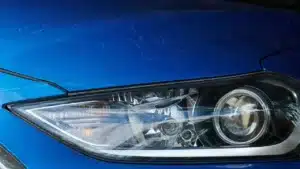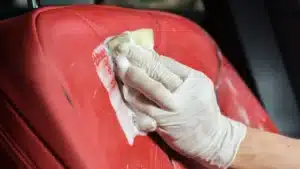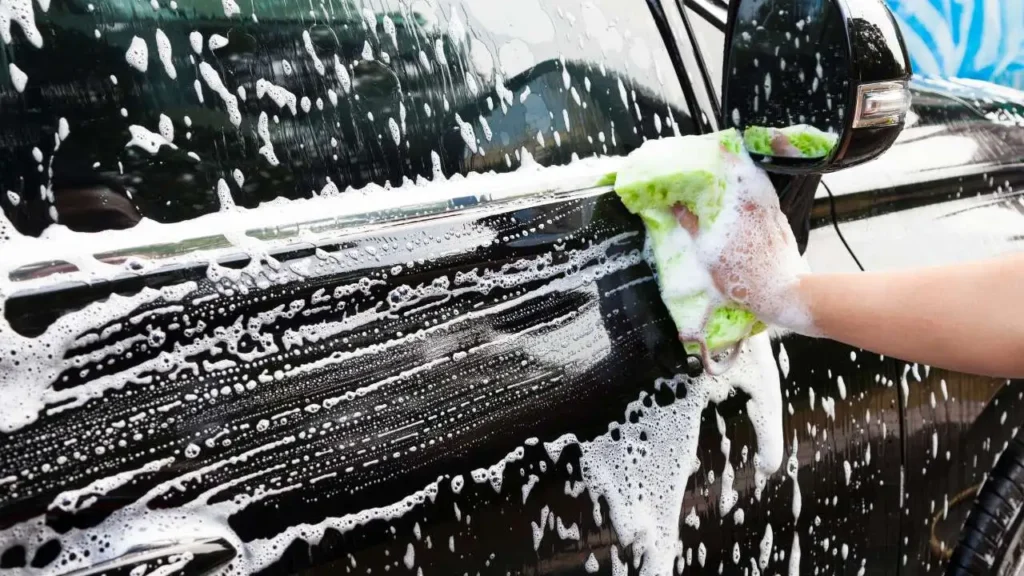
Every good car owner knows that washing is a basic requirement in car maintenance. Still, you may wonder, “how often should you wash your car?” since you will likely get varying opinions from different sources.
As a general rule, you should wash your car every two weeks. However, the interval may differ based on several other factors that we will explore further in the article.
But that’s not all! We would also provide you with other tips to help maintain your car’s shiny, head-turning exterior. So grab your buckets, sponge, and dab of curiosity as we embark on this bubbly adventure.
Factors That Determine How Often You Wash Your Car
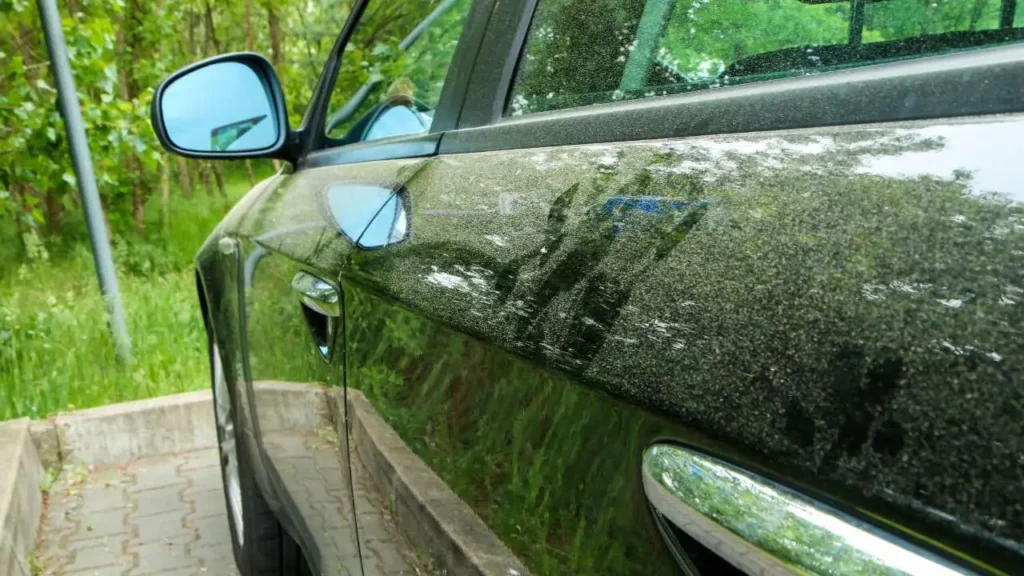
Several factors come into play when determining how often you should wash your vehicle. Obviously, there could be special cases where you have to wash immediately, such as when a bird decides to drop a payload on your car or a bug kamikazes at your windscreen. Let’s take a look at those factors below.
1. Frequency of use
If you use your automobile regularly, say, daily or every other day, it is exposed to more bird droppings, dust, dead bugs, and other types of pollutants. In such cases, we recommend washing your car often – weekly or every other week.
On the flip side, if your car spends most of the time parked in a garage, you can adjust the frequency of washing accordingly. Since the car is less exposed to contaminants, you can get away with washing it once a month or every few months. Just ensure to use a car cover for extra protection.
2. Climate and weather conditions
Contrary to what you may think, it is better to wash your auto more often during winter. Apart from the extra mud you have to deal with, the salt used to de-ice roads can corrode and cause rust on your car.
No one is asking you to hand-wash your car in a Minnesota winter – pick your battles. You can have your car washed when the temperature is above freezing. Washing when you have errands to run is also a good idea. Driving before or after a wash will protect parts from freezing.
A water hose or pressure washer can be handy in a cold climate, as you can use it to spray your vehicle’s exterior and other hard-to-reach areas. Here is a tip, a solution of warm water and white vinegar can help remove caked-up salt.
You can ease up on washing in the summer and moderate weather. But remember to work quickly when washing under the hot sun to prevent muck and soap suds from drying quickly on your car’s paint.
3. Seasonal conditions
In pollen season, for example, we encourage readers to wash their vehicles more. Pollen is abrasive, and trying to wipe it off with a cloth will do more harm than good. In such cases, you just have to bust out your washing kit and get to work.
You can keep pollen off your car by keeping it polished. The polished surface will prevent the pollen from easily sticking to your automobile.
4. Location
Where you stay can also affect how often you should wash your car. Salt from seaside areas and pollutants from industrial areas can damage your car’s paintwork. Car owners in such areas may need to wash their cars weekly.
Those who live in the Northeast US or other parts prone to acid rain will often have to wash their cars regularly to protect them from acid corrosion.
5. Personal preference and convenience
I had a friend who served in the military. He would wash his car religiously, come rain or shine. He was fond of saying, “If you’re not going to do it now, when are you going to do it?” Contrastingly, I could barely keep up with washing my vehicle on a biweekly basis.
This only shows that people are different, and if you enjoy cleaning your car, you will likely wash it more frequently. Also, washing a car takes time and effort, and I’m sure many of you will agree. If you are constantly busy, you will likely wash less often.
Why it is Important to Wash Your Car
Besides keeping your auto looking great, regular washing also helps prevent permanent damage. Below are some other benefits of regularly washing your auto.
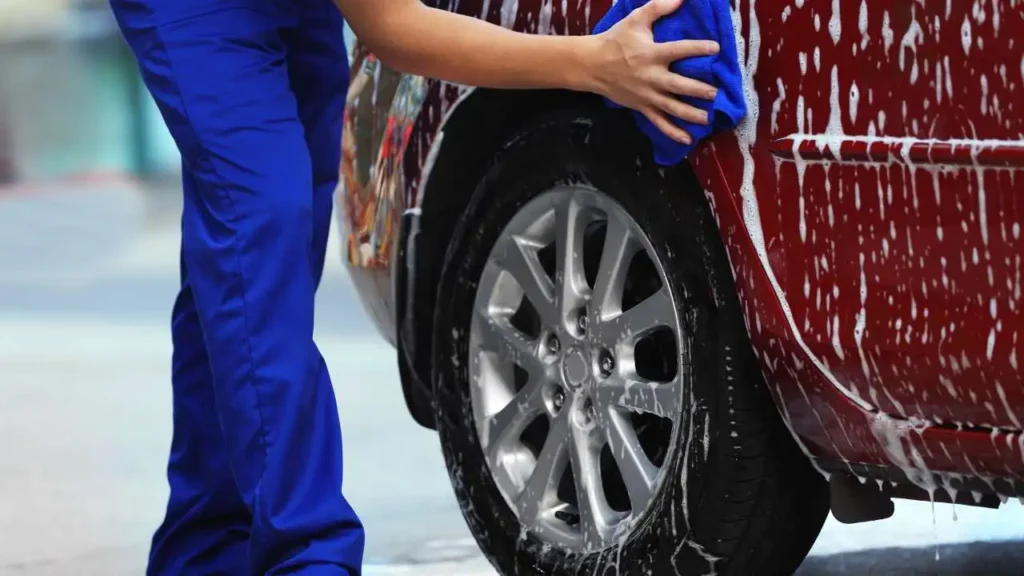
1. It protects the paintwork
Sand, pollen, and other debris that accumulate on your car’s surface can be abrasive. Over time, these particulates can lead to scratches and peels, which damage the car’s paintwork. Washing your car regularly helps remove these contaminants before they damage the paint’s clear coat.
Contaminants like bird droppings, tree sap, and road salt can damage your vehicle’s coat and expose it to rust if left on for too long. Cleaning your car on a regular basis helps prevent rust formation, especially if it is constantly exposed to such contaminants.
2. It improves the car’s resale value
Say you are in the market for a car. Would you be attracted to one with dull paintwork and a couple of scratches or a spotless, shiny one? Washing (and waxing) your automobile regularly keeps it pristine and makes it more appealing to potential buyers who would happily pay more for a well-maintained automobile.
3. It improves visibility and safety
Dirty windshields, mirrors, and windows can be a road hazard as they impair visibility. You wouldn’t want to be caught with a cloudy windshield in a snowstorm, would you?
Even when you are feeling particularly lazy, a simple wash of your windshields, windows, and mirrors to keep them clear will suffice. Also, ensure that you have enough screenwash in the reservoir. A clean car contributes to a safer driving experience for you.
4. It helps with maintenance
If you are the type that takes a hands-on approach to car washing, you can quickly detect problems like loose hubcaps, frames, and other faulty components. While cleaning the wheels and undercarriage, you may also check for broken hoses or leaky fluids.
5. Gives a good first impression
Apart from the fact that your car just looks better with regular washing, it also gives others a positive impression of you. People are fond of making conclusions about others’ characters based on a few observations. Imagine arriving on a date with a dirty car. The other person could easily assume you’re a slob in general.
Washing your car often has its benefits, but as we like to tell people, it is essential to strike a balance between keeping your car’s exterior in good condition and avoiding excessive washing that could potentially damage its protective coating. A quick look can help you determine when the car needs cleaning.
Some Wash Tips For Your Car’s Paint Job: The Dos & Don’ts For a Car Wash
Now that you know the benefits of washing your car regularly, we will provide some tips that can guide you in the process. Ordinarily, we are supposed to walk you through the process of washing your car, but we have an article detailing the step-by-step process of cleaning a car.
1. Two Bucket Method
The two-bucket method is the most reliable way to reduce the risk of causing scratches and swirls to the paintwork when hand washing your car.
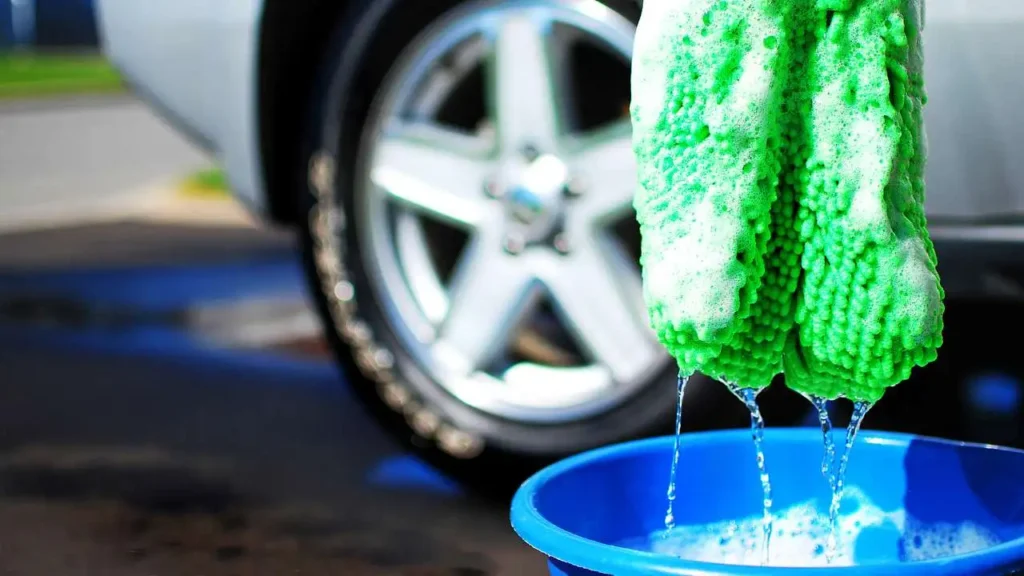
You’ll need:
- Two buckets (it wouldn’t be called the two-bucket method without this, would it?). One should be filled with clean water, while the other should contain your car wash soap.
- Microfiber wash mitt
- A microfiber drying towel
- Grit guards. You can check out how to use them here.
Once you are ready, dip your washcloth/mitt into the soap solution and scrub the car. Rinse the wash mitt in the clean water bucket to remove stuck dirt or particles before soaping it again. This process significantly reduces the dirt on the mitt and greatly reduces the risk of scratch and swirl marks.
2. Always Pre-rinse Before Washing
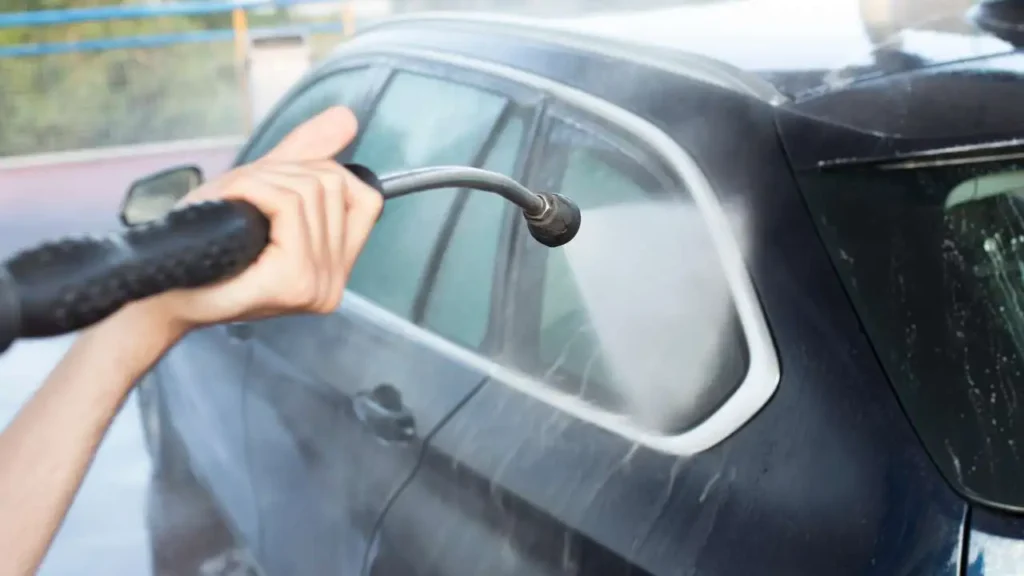
Spraying your car with a jet of water before washing can help loosen dirt, caked-up soil, and other contaminants stuck on the body. Besides making the actual washing easier and more effective, it also reduces the chances of scratches or scuffs marks when washing.
Still on rinsing, if you are not using the two-bucket method, thoroughly rinse your wash mitt before reapplying it on the car. This is even more crucial if the wash mitt falls on the ground. Rinsing it after it falls to the floor helps remove the contaminants it might have gathered, thereby preventing scratch or swirl marks.
3. Wheels and Tires First
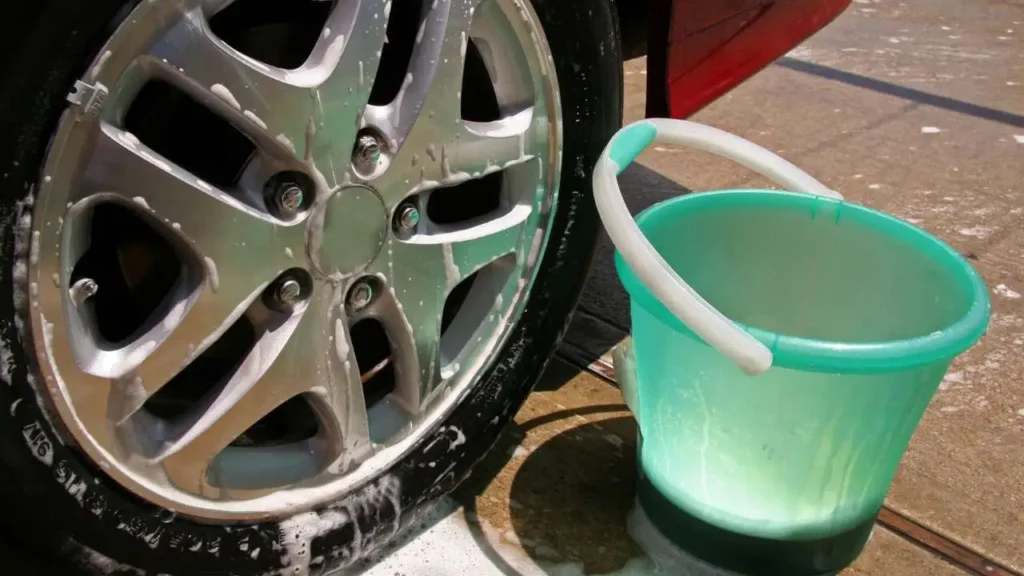
When washing, you always want to start with your wheels and tires. Why? Because they are usually the dirtiest part. By starting with the wheels, you also avoid getting contaminated water splashed on already cleaned and drying panels.
If possible, use different buckets and wash tools (preferably brushes) for these parts. You don’t want to use the washcloth, full of sharp sand and brake dust particles from the wheels on the car’s body.
Another tip when washing the wheel is to always wash and dry each wheel before moving to the next. The cleaning chemicals can potentially damage your wheels if left on for too long.
4. Don’t Forget the Interior
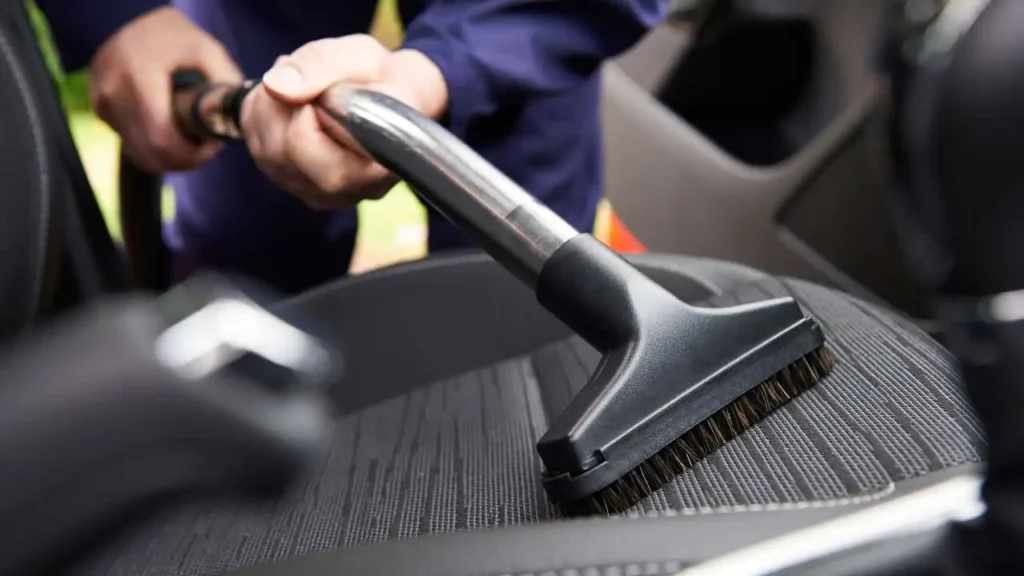
One area most people tend to leave out when cleaning their vehicle is the interior, forgetting that it also needs some love.
Vacuum the interior to get rid of filth (dog hair, dried food) from nooks, and clean the seats with an upholstery spot cleaner. Old, grimy cloth seats can look better with a simple mixture of warm water and mild detergent, while leather seats need to be cleaned and conditioned to prevent cracks.
Wipe the steering wheel, dashboard, and center console to remove the sweat and grime sitting on these surfaces. While at it, remember to clean out the floor mats too.
5. Never Wash Under Direct Sunlight
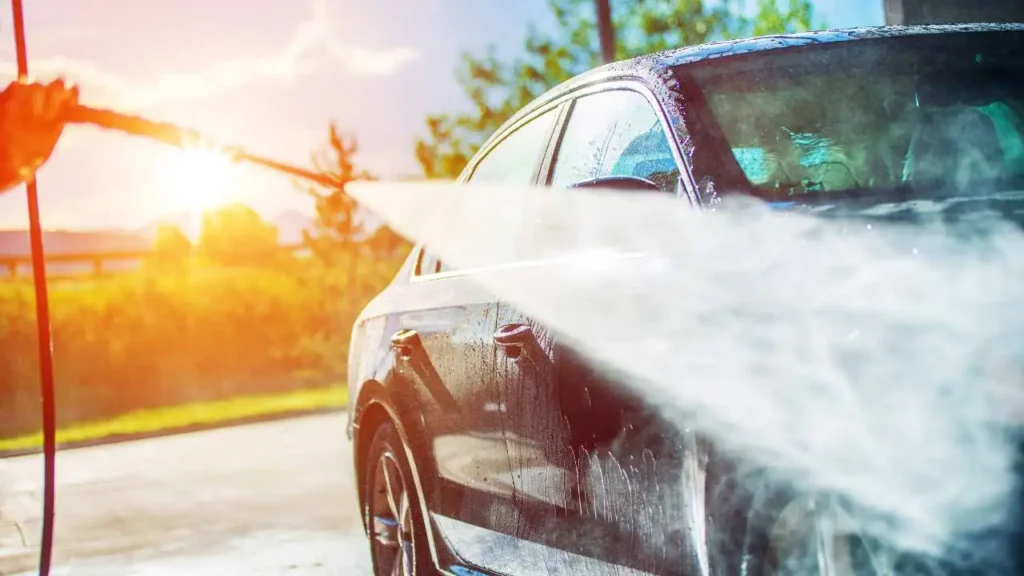
Vehicle exteriors tend to get very hot when parked under direct sunlight reaching over 100 degrees Fahrenheit. When washing a vehicle under such temperatures, the soap and water dries off before you get a chance to scrub off the muck.
This consequently causes water spots and streaks, leaving you with a sloppily washed car. One way to prevent this from happening is to avoid washing under direct sunlight, especially in the hot summers.
6. Using a Pressure Washer
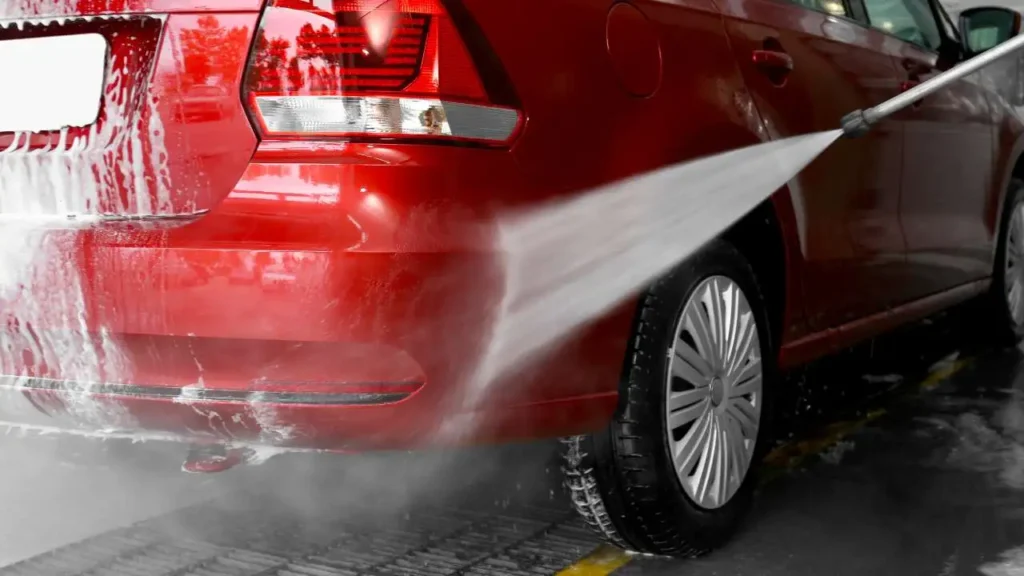
We’ll all agree that using a pressure washer makes the washing process much easier and faster. However, there are some things you need to keep in mind.
You should always start out with low pressure and only increase when necessary. Keep the washer between 1200 and 1900 psi of pressure. Anything higher can damage your vehicle paintwork or, worse, cause dents on the panels.
Secondly, never point the pressure washer directly to your car when firing up the washer. Instead, aim the nozzle at the ground for a pressure test so you can adjust appropriately and avoid accidental damage.
Lastly, use the standard 25-degree nozzle for the tires and wheels. And switch to the 40-degree tip for a gentler water stream to rinse the body, mirrors, and windshields.
Paint Protection: Must You Always Apply a Fresh Coat After Every Wash?
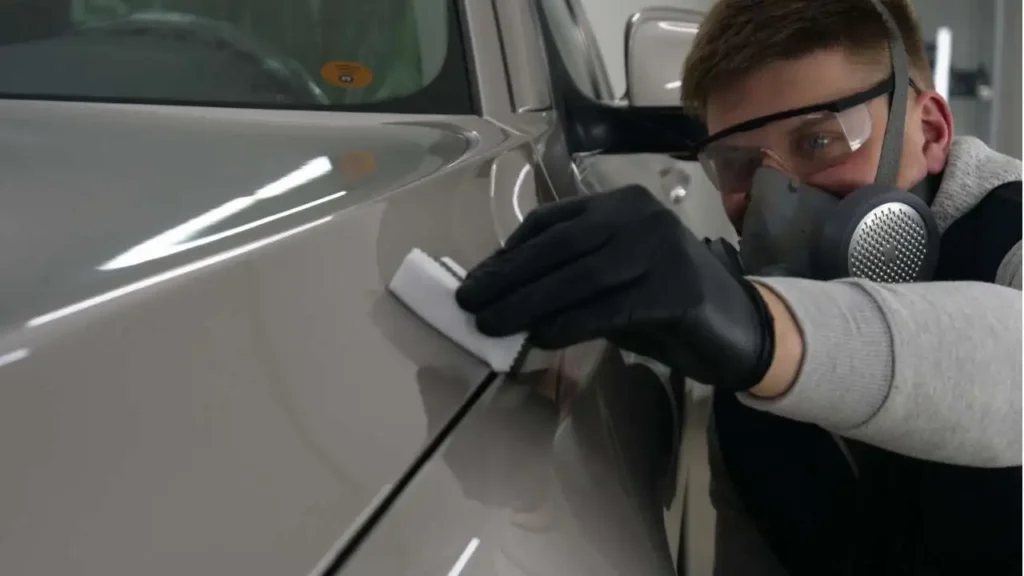
One question that’s likely to come up during a conversation about wax, sealants, or ceramic coatings is whether a fresh coat is needed after every wash.
Clearly, the reason for such a question is not farfetched from the trio being in either a liquid or semi-liquid form, bringing about a presumption that washing rinses off the protection.
Paint protection films (PPF) won’t stir up such inquiry as they are transparent layers of urethane. Well, to answer your question, you do not need to apply a fresh coat of paint protection after every wash. The misconception that the protective layer washes off after every wash is untrue.
You should, however, know that paint protections have varying durability, with traditional wax having the shortest lifespan. But neither of them is so weak as to require a fresh application after every car wash. Let’s take a quick look at some forms of paint protection and their lifespan:
- Traditional wax is the most common type of paint protection and typically lasts around three months before needing a new coat. Waxing gives your vehicle a natural glow and protects it from filth and grime. However, it is pretty weak against scratches and chips.
- Paint sealants are made from synthetic polymers and offer decent protection from UV rays. They are much more durable than waxing and can last up to six months (just about time for tire rotations) or more with proper care.
- Ceramic coating is a liquid polymer applied over the clearcoat and allowed to set, forming a hard, invisible, protective layer. Once applied, it can last for two to five years. Ceramic coatings also offer protection against most contaminants, corrosive substances like salt, UV rays, and even minor scratches. They also have great hydrophobic properties. Water will bead and run off the surface, making cleaning significantly easier.
- Paint Protection Film (PPF) is the most durable and expensive option you can possibly get. It offers the same protection as ceramic coating, albeit better resistance to chips and scratches. Some even have self-healing properties that help restore them after getting scratched or swirl marks. You can also use a heat gun to facilitate the process. While PPF is highly durable with a five to seven-year lifespan, a common complaint is that the film yellows over time.
Ultimately, all paint protection options have their own signs showing that a new coat is due. However, a uniform way of testing is by observing their hydrophobic property. Pour a little water on the car and see how it acts. If the water beads without forming “sheets,” it means your paint protection is still hanging in there.
FAQs
Can a car paint fade due to frequent washing?
No, frequent washing won’t cause your paint to fade. However, washing too often, especially with harsh products and wrong tools, can.
Are automatic car washes safe for your paint job?
The short answer is no. Many of these automatic washes use tough, abrasive clothes or brushes that leave swirl marks over time. If you can’t do a hand wash, you are better off going to a touchless car wash.
Can you wash your car with dish soap?
No, that is pretty much the equivalent of using liquid sandpaper. Dish soap often contains tiny particles that help remove food stuck on surfaces and will dull your paint with repeated use.
What is the best way to wash a car without scratching it?
Careful hand washing is by far the best way to wash a vehicle without damaging it. You can explore the two-bucket method. The only downside to hand washing is the time and effort it requires.
Conclusion
By this point, you should be able to figure out an answer to the question, “how often should you wash your car”. Before you go running off to your buds with an answer, remember that the frequency can be affected by other factors.
Doing a good washing can be tricky, but with the right materials and technique, you’re golden. One of the helpful tips discussed was the importance of rinsing wash mitts regularly while washing. It lowers the risk of transferring gunk wiped off back to the car.
And remember, washing your car is not just about aesthetics, it’s also about protecting a major investment. Think about that next time you’re debating giving your vehicle a scrub down.

